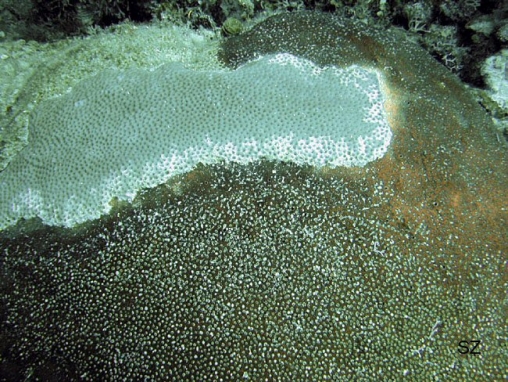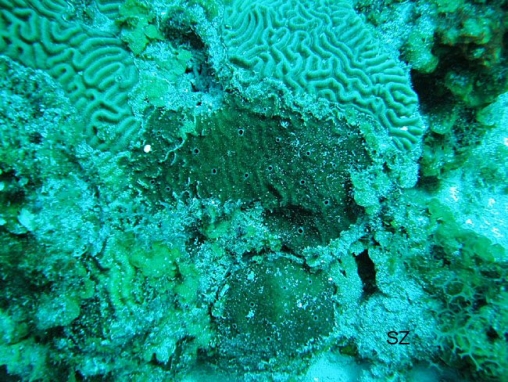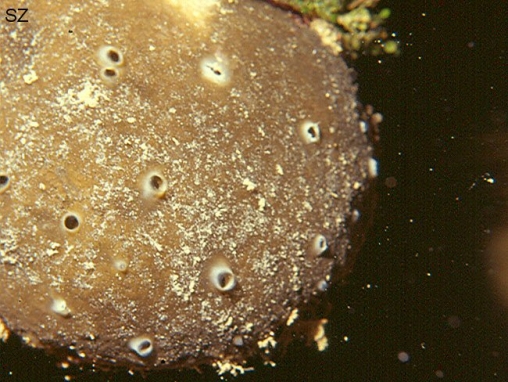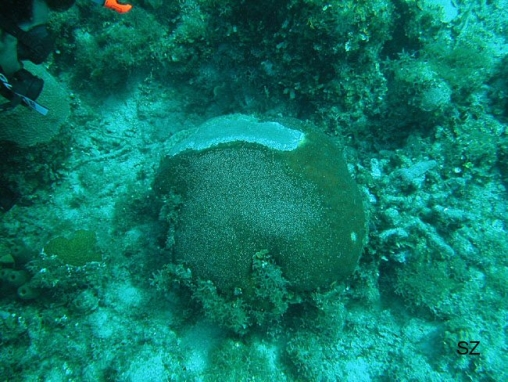Cliona caribbaea
Excavating and burrowing sponge, that tends to completely cover the substratum.
It appears as a dark brown sheet of relatively thick (1-2 mm) tissue. It may colonize corals, displacing their live tissue as it spreads. Oscules are visible, scattered, often with a collar lighter in color than the surrounding tissue. Often with white zoanthids throughout the surface.
It may be confused with Cliona tenuis, which is also brown, but it is thinner (usually the excavated substratum is visible through the tissue), and has less conspicuous oscules. These two species seldom co-exist, C. caribbaea preferring calmer and deeper habitats while C. tenuis prefers wave-exposed substrata. In some areas (e.g., Lesser Antilles), there are papillated specimens of C. caribbaea (papillae are small, isolated pieces of tissue containing oscules or pores, which are interconnected to each other under the surface). These may be confused with papillated C. aprica, but papillae are larger, with larger oscules.
It appears as a dark brown sheet of relatively thick (1-2 mm) tissue. It may colonize corals, displacing their live tissue as it spreads. Oscules are visible, scattered, often with a collar lighter in color than the surrounding tissue. Often with white zoanthids throughout the surface.
It may be confused with Cliona tenuis, which is also brown, but it is thinner (usually the excavated substratum is visible through the tissue), and has less conspicuous oscules. These two species seldom co-exist, C. caribbaea preferring calmer and deeper habitats while C. tenuis prefers wave-exposed substrata. In some areas (e.g., Lesser Antilles), there are papillated specimens of C. caribbaea (papillae are small, isolated pieces of tissue containing oscules or pores, which are interconnected to each other under the surface). These may be confused with papillated C. aprica, but papillae are larger, with larger oscules.







